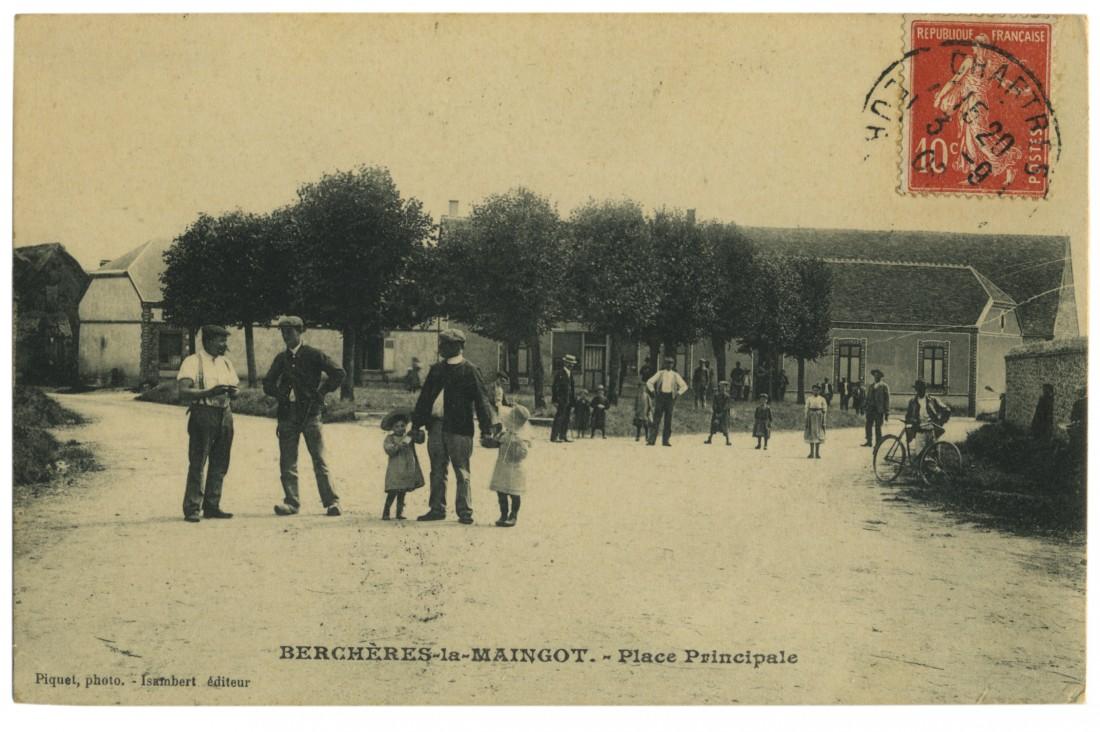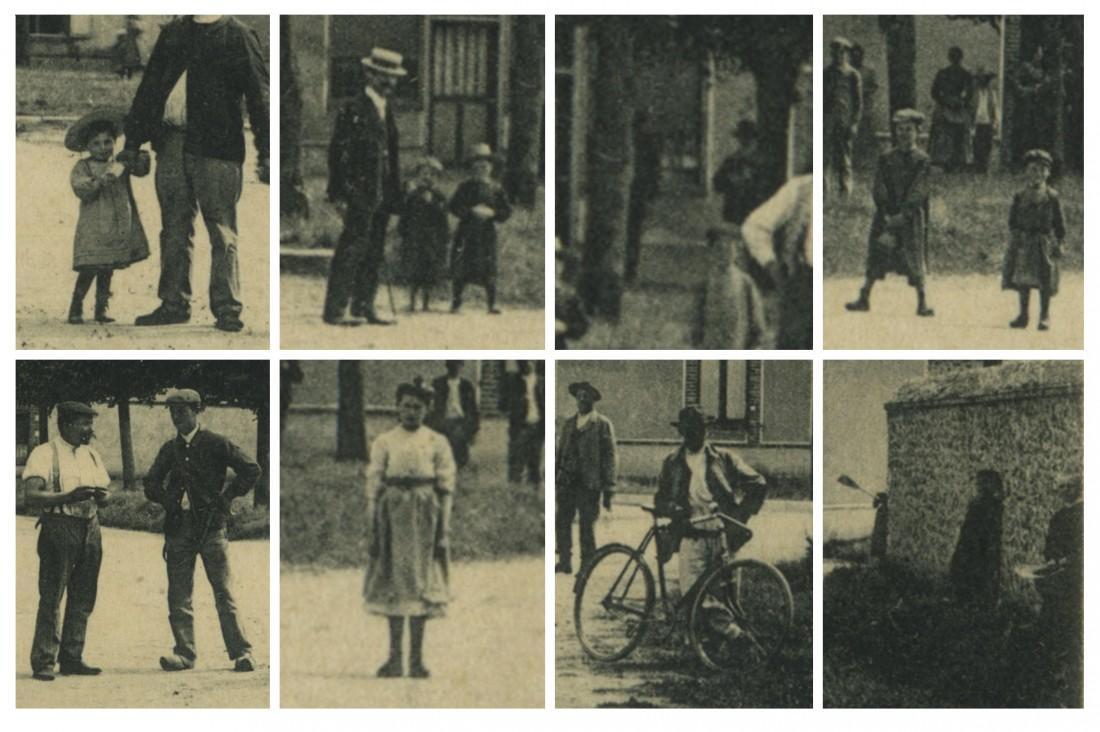Berchères-la-Maingot, 1906/1907
I’ve seen several old, photo postcards of Berchères-la-Maingot, the village where Marcel’s wife and daughters lived during World War II. Some images show bucolic rural settings, others show the harsh reality of hard-working farm and country folk scratching a living out of the earth.
I find it amusing everyone in this photo (with the exception of a few kids playing in the background) are standing still, attentively facing the camera. The photo was taken in front of Berchères’ “square,” which for generations has been used as a central gathering space.
The photo includes a fabulous cast of characters:
– Of the three men in the front, one is wearing wooden shoes, the other has an amazing handlebar mustache.
– Girls and boys wearing dress clothes. It makes me wonder if the photo had been taken on a Sunday after church.
– Men hiding behind trees and women leaning up against the stone wall, both groups seemingly trying to avoid being in the photo. The first mass-market cameras only became available six years earlier; it’s possible having one’s photo taken was still a novelty.
The back of the postcard, which includes some of the tiniest handwriting I’ve ever seen, outlines someone’s travel itinerary. The person who sent the card was just traveling through Berchères, it seemed. How do I know the postcard is from 1906/1907 since the cancellation stamp doesn’t include a year? Simple: the red, solid-background 10-cent “Sower” stamp was only issued those years.
What historic gems do you see in this fabulous old photo?


